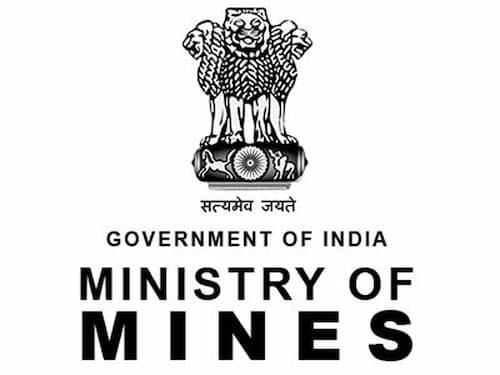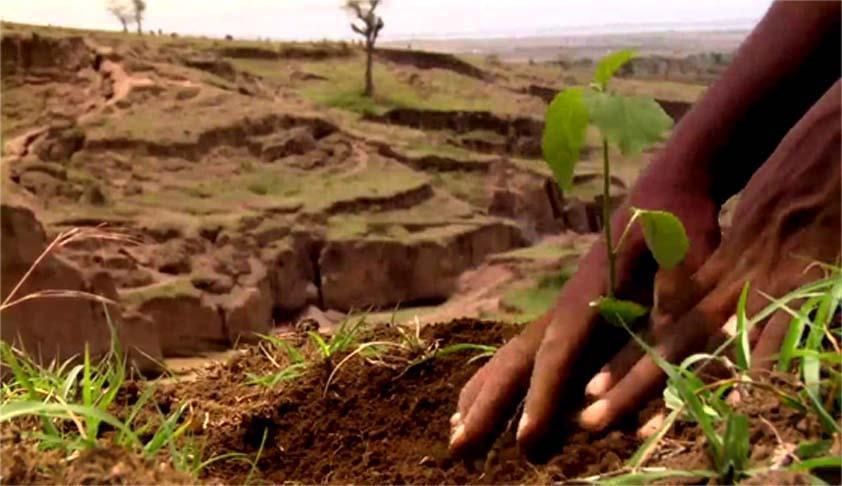UPSC Daily Current Affairs: 22nd February 2025 | Current Affairs & Hindu Analysis: Daily, Weekly & Monthly PDF Download
GS3/Science and Technology
Technology Adoption Fund Launched by IN-SPACe
Source: DD News
Why in News?
The Indian National Space Promotion and Authorization Centre (IN-SPACe) has recently introduced the Technology Adoption Fund, aimed at enhancing the capabilities of India's space startups and fostering indigenous space technology development.
- The Technology Adoption Fund has a total corpus of Rs 500 crore.
- The fund intends to reduce India's dependency on imported space technology.
- Financial support of up to 60% of project costs for startups and MSMEs.
- Funding of 40% for larger industries, capped at Rs 25 crores per project.
- Open to all eligible Non-Government Entities (NGEs) demonstrating commercial viability.
- Provides technical guidance and mentoring alongside funding.
Additional Details
- Funding Structure: The fund offers substantial financial support tailored to the size and type of the entity, ensuring that both emerging startups and larger industries can benefit.
- Technical Guidance: In addition to funding, the initiative includes mentoring to assist companies in overcoming challenges during the product development phase.
- Commercialization Support: Designed to transition early-stage space technologies developed by Indian companies into commercially viable products, bridging the gap between innovation and market readiness.
- Broader Impact: The fund is expected to promote advanced space technologies, stimulate job creation, and contribute to economic growth.
Through the Technology Adoption Fund, IN-SPACe aspires to support diverse outcomes, from new space product development to the creation of intellectual property, enhancing India's stature in the global space industry.
GS1/Indian Society
Bathousim: An Official Recognition
Source: India Today NE
Why in News?
The Bodoland Territorial Council (BTC) in Assam has officially included 'Bathouism' as an option in the religion column of various application forms. This recognition highlights the importance of preserving indigenous faiths and traditions.
- Bathouism is the traditional faith of the Bodo community, the largest plains tribe in Assam.
- The term 'Bathou' derives from the Bodo language, meaning 'five deep philosophical thoughts'.
- The faith is based on the worship of five natural elements: Bar (Air), San (Sun), Ha (Earth), Or (Fire), and Okhrang (Sky).
Additional Details
- Supreme Deity: The community venerates Bwrai Bathou as the supreme god, with 'Bwrai' referring to the 'eldest' man in terms of power and knowledge.
- Sijou Plant: The faith centers around the Sijou plant (Euphorbia splendens), symbolizing life or the soul for the Bodo people.
- Bodos plant the Sijou tree on an elevated altar surrounded by bamboo fencing, with eighteen posts woven with five bamboo strips, signifying five important life events: (i) birth, (ii) marriage or procreation, (iii) sorrow, (iv) happiness, and (v) death.
The official recognition of Bathouism underscores a commitment to preserving and respecting nature-based faiths, reflecting a broader effort to honor diverse cultural practices in India.
GS2/Polity
Converting Court Case Backlogs into Treasure Troves
Source: The Hindu
 Why in News?
Why in News?
Recently, the Supreme Court is facing a significant backlog, with approximately 82,000 pending cases. High Courts are burdened with over 62 lakh cases, and lower courts have nearly five crores pending cases. This situation raises concerns about the efficiency of the judicial system in India.
- Supreme Court backlog: Nearly 83,000 cases pending.
- High Courts' backlog: Approximately 62.39 lakh cases pending, with many over a year old.
- Lower courts' backlog: About 45.3 million cases, including 34.3 million criminal cases.
- Long-standing issues: Nearly 62,000 cases in High Courts have been pending for over 30 years.
Additional Details
- Mediation and Alternative Dispute Resolution (ADR): Promoting mediation can effectively reduce court workloads, especially for family disputes and commercial disagreements. For example, the Delhi High Court Mediation and Conciliation Centre has resolved thousands of cases through mediation.
- Data Analytics for Case Management: Utilizing AI and data analytics can help categorize cases by complexity and urgency, expediting resolutions. An example is the Supreme Court's SUPACE, which uses AI to assist judges in managing cases more efficiently.
- Fast-Track and Special Courts: Establishing dedicated courts for specific high-pendency areas, such as cheque-bouncing cases, can help expedite justice. Fast-track courts for sexual offenses have proven effective in many states.
- E-Courts and Digital Filing: The transition to e-filing and virtual hearings can streamline judicial processes and reduce delays. The E-Courts Project has enabled online case filing and improved case tracking.
- Costs for Frivolous Litigation: Imposing punitive costs for unnecessary appeals can discourage misuse of the judicial system. Heavy fines have been imposed in cases of Public Interest Litigations (PILs) that are motivated by personal agendas.
In conclusion, addressing the judicial backlog in India requires a multifaceted approach, including promoting mediation, leveraging technology, and improving the infrastructure of the legal system. These steps can transform the backlog into valuable resources for efficient dispute resolution.
GS2/Governance
School of Ultimate Leadership (SOUL) Conclave
Source: Indian Express
Why in News?
The inaugural edition of the School of Ultimate Leadership (SOUL) Leadership Conclave was recently launched by Prime Minister Modi at Bharat Mandapam in New Delhi. The event featured Bhutan’s Prime Minister Tshering Tobgay as the keynote speaker, who highlighted India's significant role in fostering governance and enhancing public service.
- The SOUL Leadership Conclave is a premier summit focused on creating transformational leaders beyond conventional political frameworks.
- The conclave gathers leaders from various sectors, including politics, business, sports, media, spirituality, and public policy, to exchange knowledge and experiences about leadership.
- This event lays the groundwork for the future SOUL Leadership Institution, a specialized academy for leadership training located in Gandhinagar, Gujarat.
Additional Details
- Multi-Sector Leadership: The conclave promotes collaboration among leaders from diverse fields, fostering cross-sector cooperation and sharing of insights.
- Training & Development: The focus is on developing ethical and globally competent leaders, moving beyond the traditional political dynasties.
- SOUL Leadership Institute: A substantial 22-acre campus with an investment of ₹150 crore is being established in Gandhinagar, Gujarat, dedicated to formal leadership training.
- Global Leadership Insights: The conclave discusses critical topics related to policymaking, governance, and leadership challenges in the context of both national and international perspectives.
- Strengthening India’s Leadership Pipeline: The initiative aims to prepare future leaders in areas such as governance, economics, diplomacy, and innovation.
The SOUL Conclave represents a significant step towards cultivating effective leadership in India, emphasizing the importance of cross-sector collaboration and ethical governance.
GS2/Polity
Article 101(4) - Attendance and Leave of Members of Parliament
Source: Indian Express
Why in News?
Amritpal Singh, the imprisoned MP from Khadoor Sahib, has approached the Punjab and Haryana High Court to seek permission to attend the ongoing Parliament sessions. His prolonged absence raises concerns about the potential vacancy of his seat due to a lack of attendance.
- Amritpal Singh has been detained since April 2023 under the National Security Act.
- He has only attended 2% of Parliament sessions since winning the 2024 Lok Sabha election from prison.
- According to Article 101(4), a member's seat may be declared vacant after 60 days of absence without permission.
Additional Details
- Attendance Calculation: The 60-day absence rule excludes periods when the House is prorogued or adjourned for over four consecutive days. Thus, only actual sittings count towards the absence period.
- Amritpal Singh has attended just one parliamentary sitting—his swearing-in last July—since then he has remained in detention.
- Leave Applications: Members can apply for leave to the 'Committee on Absence of Members from the Sittings of the House'. Although applications are generally approved, the process involves recommendations from the committee followed by ratification from the House.
- Previous leave applications often cite personal or family illness as reasons, but there have been instances where imprisonment has also been accepted as valid grounds for leave.
- In 2023, Ghosi MP Atul Rai was granted leave for being absent for 23 consecutive sittings due to imprisonment.
In conclusion, the provisions outlined in Article 101(4) illustrate the importance of attendance in Parliament and the procedural nuances regarding leave applications. The outcome of Amritpal Singh's plea may set a significant precedent for similar cases in the future.
GS2/International Relations
The U.S. Visit, Viewed Through Industry’s Business Lens
Source: The Hindu
Why in News?
Prime Minister Narendra Modi’s recent visit to the United States marks a significant milestone in enhancing the bilateral relations between India and the U.S. This brief yet impactful visit has notable implications across various sectors, reinforcing the strategic partnership between the two nations. Key areas of focus include trade, technology, defense, energy, and education, all of which set the stage for deeper cooperation and integration.
- Initiation of the Bilateral Trade Agreement (BTA) aimed at reducing trade barriers.
- Emphasis on strategic technological collaboration through the TRUST initiative.
- Strengthened defense ties with a 10-year framework for defense partnership.
- Commitment to energy security and sustainability, focusing on diverse energy sources.
- Advancements in higher education collaboration, including U.S. campuses in India.
Additional Details
- Bilateral Trade Agreement (BTA): The BTA seeks to lower trade barriers and streamline regulatory processes, targeting a trade goal of $500 billion by 2030, which will enhance economic engagement and investment opportunities.
- TRUST Initiative: This initiative focuses on cooperation in critical technological areas like AI, semiconductors, and biotechnology, enhancing innovation partnerships between U.S. and Indian companies.
- Defense Partnership: The new framework facilitates expanded technology transfers and joint production, boosting India's indigenous manufacturing capabilities.
- Energy Cooperation: Discussions included collaboration on small modular reactors (SMRs) and a commitment to enhance the sustainability of energy production.
- Higher Education Collaboration: New agreements aim to improve access to quality education in India through U.S. educational institutions establishing campuses locally.
In conclusion, Prime Minister Modi’s visit to the United States was not merely a diplomatic event; it laid the foundation for a transformative partnership between India and the U.S. The agreements reached during this visit reflect a shared vision for mutual prosperity and strategic alignment, paving the way for India’s sustained economic growth and positioning it as a significant player in the global economy.
GS3/Environment
Kuno National Park
Source: The Hindu
 Why in News?
Why in News?
Recently, five cheetahs were successfully released into the wild at Kuno National Park (KNP) located in the Sheopur district of Madhya Pradesh. This initiative is part of a broader effort to reintroduce cheetahs into their natural habitat in India.
- Kuno National Park is situated in Madhya Pradesh's Morena and Sheopur districts.
- The park spans an area of 750 square kilometers and is located near the Vindhyan Hills.
- Kuno Park was designated as a national park in 2018, having originally been established as a wildlife sanctuary.
- The park is part of the 'Action Plan for Introduction of Cheetah in India.'
Additional Details
- Vegetation: Kuno is mainly characterized by grassland, with some rocky outcrops present.
- Flora:The park's forested areas feature a variety of trees, including Kardhai, Salai, and Khair. It is home to a total of:
- 123 tree species
- 71 shrub species
- 32 exotic and climbing species
- 34 bamboo and grass species
- Fauna:The park protects a diverse range of wildlife, including:
- Jungle cat
- Indian leopard
- Sloth bear
- Indian wolf
- Striped hyena
- Golden jackal
- Bengal fox
- Dhole
The introduction of cheetahs into Kuno National Park marks a significant step towards wildlife conservation and restoration of the species in their natural habitats in India.
GS3/Economy
Reclassification of Minerals by the Ministry of Mines
Source: Business Standard
 Why in News?
Why in News?
The Ministry of Mines has reclassified Barytes, Felspar, Mica, and Quartz as major minerals. This decision aligns with the National Critical Mineral Mission aimed at enhancing India's industrial growth.
- Major minerals now include Barytes, Felspar, Mica, and Quartz.
- This reclassification is intended to boost industrial applications and energy transition.
Additional Details
- Major Minerals:These are minerals with high economic value, utilized in industrial applications, energy production, and metallurgy. Examples include:
- Metallic Minerals: Iron ore, Copper, Bauxite, Gold, Manganese, Zinc, Lead.
- Energy Minerals: Coal, Lignite, Uranium.
- Industrial Minerals: Limestone, Rare Earth Elements, Graphite, Gypsum.
- Minor Minerals:These have lower economic value and are primarily used in construction and local industries. Examples include:
- Building Materials: Sand, Gravel, Stone, Marble.
- Non-Metallic Minerals: Dolomite, Mica, Quartz, Felspar, Clay (prior to reclassification).
- Key Reasons for Reclassification:
- Extraction of Critical Minerals: These minerals are often found alongside Lithium, Beryl, Niobium, Tin, and Tantalum, which are crucial for various industries including energy transition and healthcare.
- Industrial & Strategic Importance: Barytes is essential for oil drilling and radiation shielding, while Quartz, Felspar, and Mica play significant roles in ceramics, glass, and semiconductor sectors.
- Improved Regulation & Transparency: Reclassification aims to ensure adherence to scientific mining practices and compliance with regulations, thus reducing illegal extraction.
- No Impact on Existing Leases: Current leases will remain valid for 50 years, allowing miners to adapt to the new classifications without disruption.
This reclassification is a significant step towards improving the management and utilization of India’s mineral resources, ensuring sustainable development in the sector.
Previous Year Question:
[2020] Consider the following minerals: Bentonite, Chromite, Kyanite, Sillimanite. In India, which of the above is/are officially designated as major minerals?
(a) 1 and 2 only
(b) 4 only
(c) 1 and 3 only
(d) 2, 3 and 4 only
GS2/International Relations
LNG’s Centrality in India – Qatar Bilateral Trade
Source: Indian Express
Why in News?
India's bilateral trade with Qatar is significantly influenced by the country's imports of liquefied natural gas (LNG), with Qatar being the largest supplier. Both nations have set a target to double their trade to $28 billion annually by 2030, with LNG expected to play a crucial role in achieving this objective. This strategic partnership was reinforced during the recent visit of Qatar’s Amir Sheikh Tamim bin Hamad Al-Thani.
- India aims to double its bilateral trade with Qatar to $28 billion by 2030.
- Qatar is the largest supplier of LNG to India, significantly impacting trade balances.
- The U.S. is emerging as a new competitor in India’s LNG market.
Additional Details
- LNG Imports Growth: India's LNG imports are projected to rise over the next five years due to an increase in natural gas consumption, which aligns with Qatar's plans to expand its LNG export capacity.
- Trade Imbalance: Despite efforts to enhance exports, India's trade balance remains skewed towards Qatar, with LNG constituting 50% of total imports from Qatar, valued at $11.49 billion in the first 11 months of 2024.
- Qatar's Dominance: From January to November 2024, India imported 9.82 million tonnes of LNG from Qatar, which accounted for 38.8% of its total LNG imports by volume.
- Long-Term Contracts: Petronet LNG holds a long-term contract with Qatar for 7.5 million tonnes per annum (mtpa) of LNG, extended to 2048. Additionally, GAIL signed a five-year agreement with QatarEnergy for further LNG supplies.
- Future Projections: India's natural gas consumption is expected to grow nearly 60% by 2030, necessitating increased LNG imports, as domestic production meets only half of the demand.
- Qatar's Expansion: Qatar plans to nearly double its liquefaction capacity from 77 mtpa to 142 mtpa by 2027, solidifying its role as a key LNG supplier for India.
- U.S. Factor: The U.S. is becoming a major competitor for LNG supply to India, with imports from the U.S. reaching 5.12 million tonnes, making up 20.2% of India's total LNG imports in early 2024.
- Energy Partnership: The U.S. and India are enhancing cooperation in energy exports, with Indian companies exploring long-term contracts with U.S. suppliers.
In conclusion, energy is a pivotal aspect of India-Qatar relations, with both countries looking to strengthen their energy partnerships through mutual investments and long-term contracts, ensuring long-term energy security and stability in trade.
GS2/International Relations
USAID Meddling Charge ‘Deeply Troubling’: MEA
Source: Indian Express
Why in News?
The Indian government is currently investigating claims from the U.S. government regarding USAID's alleged plan to spend $21 million to influence voter turnout in India. This situation raises significant concerns about foreign influence in domestic electoral processes.
- USAID's origins and objectives.
- Recent controversies surrounding USAID's actions in India.
- The broader implications of USAID's funding cuts and operational changes.
Additional Details
- What is USAID? USAID, or the United States Agency for International Development, was established in 1961 under President John F. Kennedy through the Foreign Assistance Act to promote global development and humanitarian assistance, aligned with U.S. foreign policy goals.
- Allegations of Interference: The Indian government is investigating allegations that USAID allocated $21 million to influence voter turnout, spurred by a report from the U.S. Department of Government Efficiency (DOGE).
- Global Funding Cuts: The Trump administration's decisions to freeze USAID funds and withdraw from the World Health Organization have critically impacted health sectors in various countries, leading to alternative partnerships emerging, particularly with China.
- Dismantling of Operations: Legal challenges have arisen against the Trump administration's plans to dismantle USAID operations, which included placing staff on administrative leave.
- Impact of USAID's Programs: USAID has faced criticism for its role in several countries including Venezuela, Haiti, and Iraq, where its aid has been perceived as politically motivated or has led to dependency and corruption.
- Significance in Global Development: USAID plays a crucial role in humanitarian assistance, health initiatives, economic development, and strengthening democratic governance globally.
- Impact on India: USAID has significantly contributed to India's public health, clean energy initiatives, disaster management, education, and rural development.
In conclusion, the allegations of USAID's interference in India's electoral process have sparked a serious investigation by the Indian government, highlighting the complex dynamics of foreign aid, national sovereignty, and international relations.
GS3/Environment
Compensatory Afforestation
Source: Indian Express
 Why in News?
Why in News?A recent audit report by the Comptroller and Auditor General of India (CAG) concerning the operations of the Compensatory Afforestation Fund Management and Planning Authority (CAMPA) during the period from 2019 to 2022 has highlighted significant issues. It reveals that funds earmarked for compensatory afforestation in Uttarakhand were diverted for other activities by the state's forest divisions.
- The principle behind compensatory afforestation is that forests, being crucial resources providing ecological services, should not be destroyed.
- Developmental needs often lead to the diversion of forests for non-forest purposes, yet afforested areas do not provide immediate ecological benefits.
- The interim loss of ecological services, such as timber and carbon sequestration, must be compensated for through appropriate financial measures.
Additional Details
- Net Present Value (NPV): To address the loss of services from diverted forests, the law mandates calculating the NPV for a 50-year period, which must be recovered from the user agency responsible for the diversion.
- Although user agencies often are private entities, they are not tasked with performing the afforestation themselves; this responsibility lies with the state government, but the costs must be covered by the user.
- Compensatory afforestation funds and NPV payments are managed by CAMPA, with funds collected by state governments and eventually transferred to central and state accounts for afforestation efforts.
- The Compensatory Afforestation Fund Act of 2016 established a national CAMPA and corresponding state CAMPA bodies, facilitating the structured management of afforestation funds.
- States receive only 90% of their allocated funds after administrative expenses are deducted, impacting the overall afforestation initiatives.
The report underscores the need for stricter adherence to compensatory afforestation guidelines, ensuring that ecological balance is maintained despite developmental pressures. Immediate corrective measures and monitoring of fund allocation can help restore the integrity of afforestation efforts.
|
44 videos|5271 docs|1113 tests
|
FAQs on UPSC Daily Current Affairs: 22nd February 2025 - Current Affairs & Hindu Analysis: Daily, Weekly & Monthly
| 1. What is the Technology Adoption Fund launched by IN-SPACe? |  |
| 2. How does Bathousim receive official recognition? |  |
| 3. What are the implications of converting court case backlogs into treasure troves? |  |
| 4. What is the focus of the School of Ultimate Leadership (SOUL) Conclave? |  |
| 5. What is the significance of Article 101(4) regarding attendance and leave of Members of Parliament? |  |
















